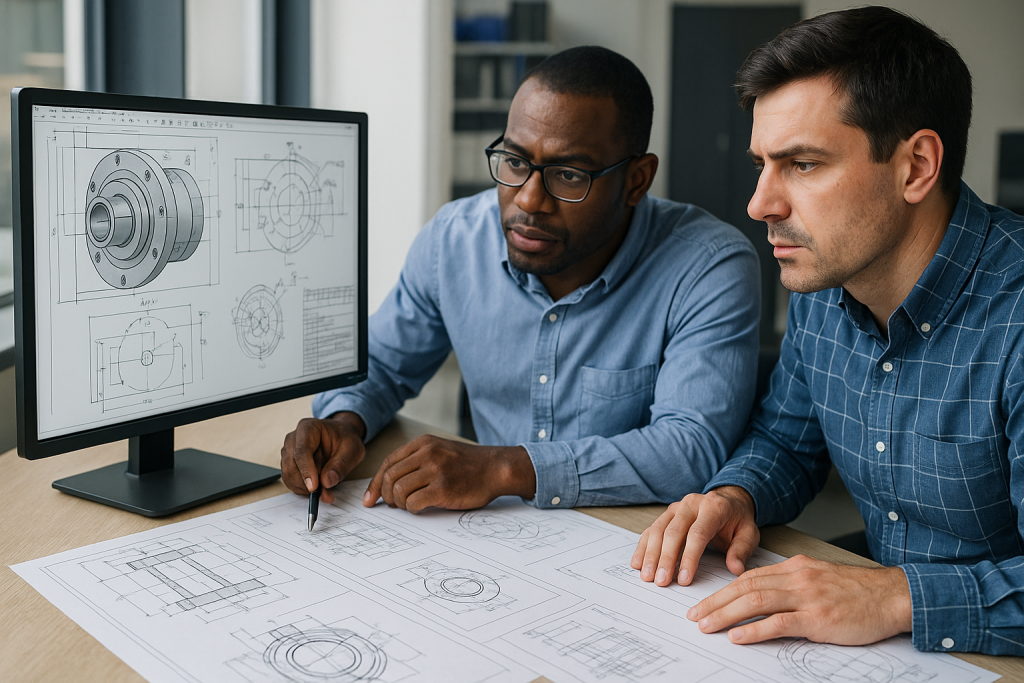In modern manufacturing, reducing material waste is not just environmentally responsible—it’s also cost-effective. Traditional subtractive manufacturing methods, such as CNC machining, often discard more than 50% of the raw material during production. 3D printing, or additive manufacturing, offers a powerful alternative, building parts layer by layer and using only the material needed. By integrating optimization strategies, manufacturers can reduce material waste by up to 50%, enhance efficiency, and save costs.
For high-quality 3D printing and prototyping solutions, companies like BOONA Prototypes provide professional services with a wide range of materials and technologies.
I. Key Strategies for Waste Reduction
1. Topology Optimization
Topology optimization redesigns the internal structure of components to maintain strength while reducing material usage. For instance, lattice structures replace solid cores without compromising mechanical properties.
| Parameter | Standard Solid Part | Optimized Lattice |
|---|---|---|
| Material Usage | 100% | 55% |
| Weight | 1.0 kg | 0.58 kg |
| Strength Retention | 100% | 95% |
Using topology optimization, manufacturers can significantly cut down on raw material consumption while maintaining performance.
2. Efficient Infill Patterns
Selecting optimized infill patterns, such as honeycomb or gyroid, allows for strong, lightweight components with less material. This strategy not only reduces material usage but also speeds up printing times.
| Infill Type | Material Usage Reduction | Printing Time Reduction |
|---|---|---|
| Rectilinear | 10% | 5% |
| Honeycomb | 35% | 25% |
| Gyroid | 45% | 30% |
For professional guidance and high-precision 3D printing, BOONA Prototypes 3D Printing Services offer SLA, SLS, DMLS, FDM, and other additive technologies.
3. Optimized Nesting and Multi-Platform Scheduling
Arranging multiple parts efficiently on the print bed, known as nesting, can maximize material utilization. Software-assisted multi-platform scheduling further improves productivity.
| Optimization Method | Material Waste Reduction | Throughput Increase |
|---|---|---|
| Manual Nesting | 15% | 10% |
| Software Nesting | 35% | 25% |
| Multi-Platform | 50% | 40% |
BOONA Prototypes provides engineering support for optimized part placement and efficient batch production.
4. Recycling and Reuse of Materials
Using recycled filaments and powders reduces dependence on virgin materials, contributing to a circular economy.
| Material Type | Virgin Material | Recycled Material | Waste Reduction |
|---|---|---|---|
| PET | 1 kg | 0.55 kg | 45% |
| ABS | 1 kg | 0.60 kg | 40% |
| PLA | 1 kg | 0.50 kg | 50% |
BOONA also supports sustainable prototyping and offers advice on incorporating recycled materials in projects (BOONA Manufacturing Services).
Conclusion
By applying topology optimization, efficient infill patterns, optimized nesting, and material recycling, 3D printing can cut material waste by 50% or more. Companies leveraging these strategies can achieve sustainable manufacturing, lower costs, and faster production cycles.
For professional prototyping and 3D printing services, BOONA Prototypes provides comprehensive solutions—from design support to rapid prototyping and batch production—ensuring high precision, quality, and efficiency for every project.
FAQs
1. How does 3D printing reduce material waste compared to traditional manufacturing?
3D printing is an additive process, meaning it builds parts layer by layer using only the material required for the final component. Unlike subtractive methods such as CNC machining, it eliminates excess cutting and scrap material, significantly reducing waste.
2. What is topology optimization in 3D printing?
Topology optimization is a design technique that removes unnecessary material from a part while maintaining strength and functionality. It often uses lattice or honeycomb structures to achieve a lightweight, efficient design.
3. Can infill patterns really affect material usage?
Yes. Choosing efficient infill patterns like gyroid or honeycomb can reduce material consumption by up to 45% while maintaining structural integrity, compared to solid or rectilinear infill patterns.
4. What is nesting, and why is it important?
Nesting is the arrangement of multiple parts on the print bed to maximize material usage. Optimized nesting, especially using software tools, reduces scrap, speeds up production, and increases throughput.
5. How can recycled materials be used in 3D printing?
Filaments and powders made from recycled plastics can be reused in 3D printing, reducing the need for virgin materials and contributing to a circular economy. This is ideal for prototyping and low-volume production.
6. How much material waste can be saved with optimization?
By combining topology optimization, efficient infill patterns, nesting, and recycled materials, manufacturers can cut material waste by up to 50% or more, depending on the project and part complexity.
7. Are there professional services that help implement these optimizations?
Yes. Companies like BOONA Prototypes provide design consultation, optimized 3D printing, and prototyping services to help reduce material waste and improve efficiency.
8. Does using these optimization strategies compromise part strength?
When properly designed, optimized structures such as lattices or gyroids maintain up to 95% of the original part strength while significantly reducing material usage.
9. Can these optimization strategies be applied to all 3D printing technologies?
Yes. Topology optimization, infill pattern adjustments, and nesting can be applied across FDM, SLA, SLS, and DMLS processes, although material recycling may depend on the type of filament or powder used.
10. How do these strategies impact production cost and time?
Optimizing material usage reduces raw material costs and may decrease print time, particularly with efficient infill patterns and optimized part placement, leading to overall cost savings.



